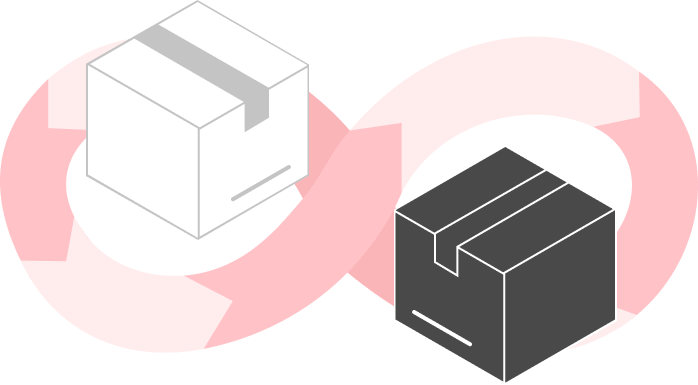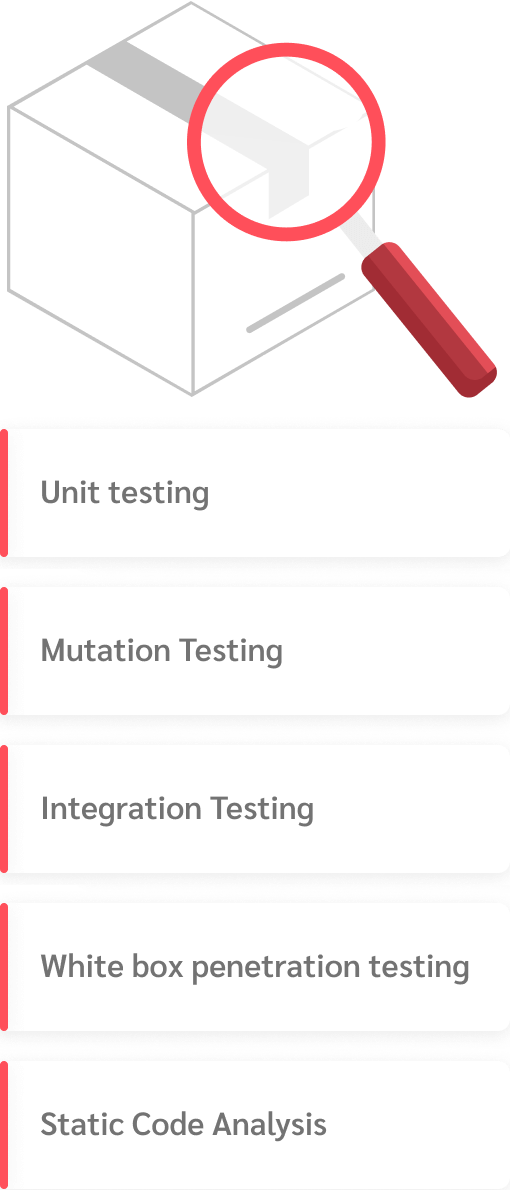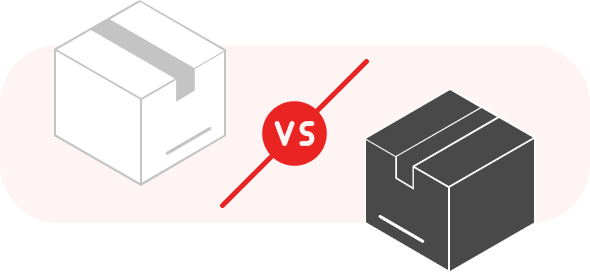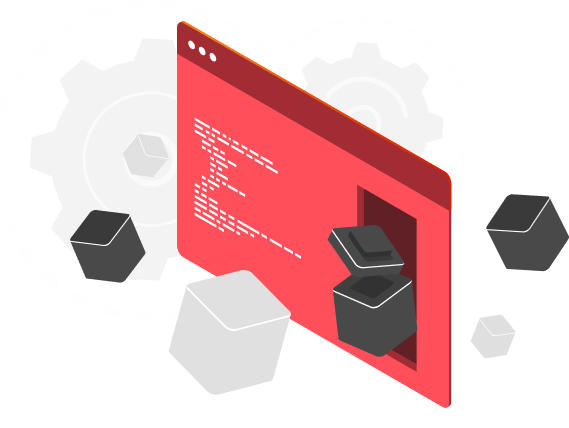Key Differences and Similarities Between Black Box and White Box Software Testing

Content Map
More chaptersThis article identifies some key differences and similarities between black box and white box software testing to give you an idea of each type.
Software testing is a crucial part of any software development life cycle whether it’s web or mobile application software. Testing not only validates the quality of the software product but also gives the developer a chance to improve it as well.
Almost every software application requires some level of coding whether it is a simple line of code or complex codes. To ensure that the code runs smoothly and performs its functions, the developer will have to run a few tests. There are two types of testing that developers usually perform at this point, namely black box software testing and white box software testing.
In this article, we will discuss both types of testing method and their processes. We will also identify some of the key differences and similarities between black box and white box testing.
What Is Black Box Besting?

Black box software testing is the testing method that analyses the functionality of a software or application without knowing much about its internal structure/ design or implementation. It is also known as behavioral, opaque-box, closed-box, specification-based, or eye-to-eye testing.
This software testing technique allows the tester to input information and to observe the generated output. A black box test will determine if the software or application delivers on its promise by evaluating all the relevant subsystems. Subsystems that are checked during a black box test include UI/UX, web server or application server, database, dependencies, and integrated systems.
Types of Black Box Testing

Functional Testing
Functional testing focuses more on the critical aspects of the software, integration between the key components and the entire system. This method tests specific functions and features of the software and includes smoke testing/sanity testing, integration testing, and system testing. One common example of this type of testing is ensuring that someone can log in with the right credentials while others entering the wrong credentials are not.
Non-functional Testing
Non-functional testing goes beyond testing features and functionalities. Instead of checking to see if the software can perform an action, it checks to see how the software performs that action.
This type of testing will check to see if the software is easy to use and understand, how it performs under peak loads, if it is compatible with relevant devices and browsers, and if it is exposed to any security threats.
Regression Testing
Regression testing is applied to the functional aspects of the software to check if a new version exhibits a regression or degradation in its capabilities. This testing is done to check if a specific feature no longer works in a new version or if a well-performed operation performs poorly in the new version.
Pros of Black Box Testing

- Quick test case development - Testers are only concerned with the Graphical User Interface (GUI) of the application. They do not look into the code to identify issues.
- Testing can be outsourced - Testers aren’t required to know the code so outsourcing black box software testing is an option.
- End-user experience - tests are performed from the end-users point of view
- Unbiased review - Since the tester has no knowledge of the code, they have no personal bias on the code’s functionality.
Cons of Black Box Testing

- Test paths can be missed or repeated - the testing process may be duplicated or some paths may get missed entirely during testing.
- Some aspects of the application may not get tested - some functions and features cannot be tested because the tester lacks coding knowledge.
- Needs clear and concise test specifications - testers need to be sure of what they need to test to ensure the quality of the software reaches the highest standards.
What Is White Box Testing?

Unlike black box software testing, white box testers need to know everything about the inner workings of the software system including its internal structure design, implementation, code and others. This type of testing is done to verify the flow of input and output to improve the software design, usability and security.
White box software testing is also known as clear box testing, open box testing, transparent box testing, code-based testing and glass box testing because the code is visible to testers. This testing method tests the software for internal security holes and broken codes. It checks source code or binaries to provide feedback on bugs and other problems.
Types of White Box Testing

Unit testing
Unit testing is the first type of testing performed on an application. This usually continues on every unit or block of code as it is being developed. Unit testing is performed by a programmer who will have to develop a few lines of code or tests to make sure the software is working as expected.
The main advantage of unit testing is that bugs are identified in the early stages of the software development process which makes it easier and cheaper to fix.
Mutation Testing
Mutation testing is done on units of code to check the robustness and consistency of the code. The tester will make small random changes to the code and see if it has any effect on the expected outcome.
Integration Testing
Integration testing as the name suggests checks to see how the internal components in a software system work together or how they integrate with an external system.
White box penetration testing
White box penetration testing occurs when the tester acts as a hacker and attempts to attack the software application. This person will need to know the application’s source code, network information, IP addresses and server information. The main aim is to attack the code from various angles to expose any security threats and loopholes.
Static Code Analysis
Static code analysis identifies coding errors and vulnerabilities in static code. This is done by using predefined patterns or machine learning analysis.
Pros of White Box Testing

- Performed by programming experts - testers sift through bits of code to identify problems which saves time when identifying flaws.
- Problems are identified quicker - testers perform unit testing, which involves testing small batches of code to detect flaws early in the software development process.
- Detect security issues - programmers can perform multiple attacks on the code to expose security risks or flaws.
- Continuous development of the code - since the code is tested early on in the process, it can have the necessary work done to improve its functions.
Cons of White Box Testing

- Testers are hard to find - coding knowledge is required to perform white box testing, and it can be hard to find someone who is well versed in code.
- Expensive - resources are limited, so the price may be steep when you do find a white box tester.
- High chance of errors - like other human-based testing methods, there is a slight chance of something being missed or mistakes being made.
Black Box vs White Box Testing

Cons of White Box Testing
They both help to achieve maximum bug elimination
Although one is performed at the end of the software development process and the other at every stage of the process, they both work to ensure that the application is free from bugs and performs its functions.
Detecting defects
Black box testing and white box testing detects defects in the overall behavior of the application. Both of these testing types are performed by testers who interact with the software to discover if the software is working well. If any defects are identified, they both help to discover the root cause of those defects.
Key differences between black box and white box testing
- Black box testing requires no knowledge of the internal structure of the application whereas white box testing requires the tester to know everything there is about the software.
- Black box testing does not require programming knowledge, but white box testing does require the tester to know how to read, write and fix code.
- Black box testing checks the behavior of the software, while white box testing checks the internal components and operation of the software.
- Black box testing is concerned with the end-user perspective, and white box testing deals with code structures, paths, conditions, and branches.
- Black box testing is less time-consuming, while white box testing is very time-consuming.
- Black box testing is far cheaper than white box tester. Hiring an offshore company that offers software testing services will cost less than hiring a local or in-house programmer.
Conclusion

Black box testing and white box testing are on different ends of the testing spectrum and performed by testers with different knowledge bases. White box software testing checks for problems with specific components, while black box software testing checks the system as a whole. They both have their advantages and disadvantages and differences. However, employing both these testing methods ensures the best version of your software is available and that it works as expected.







